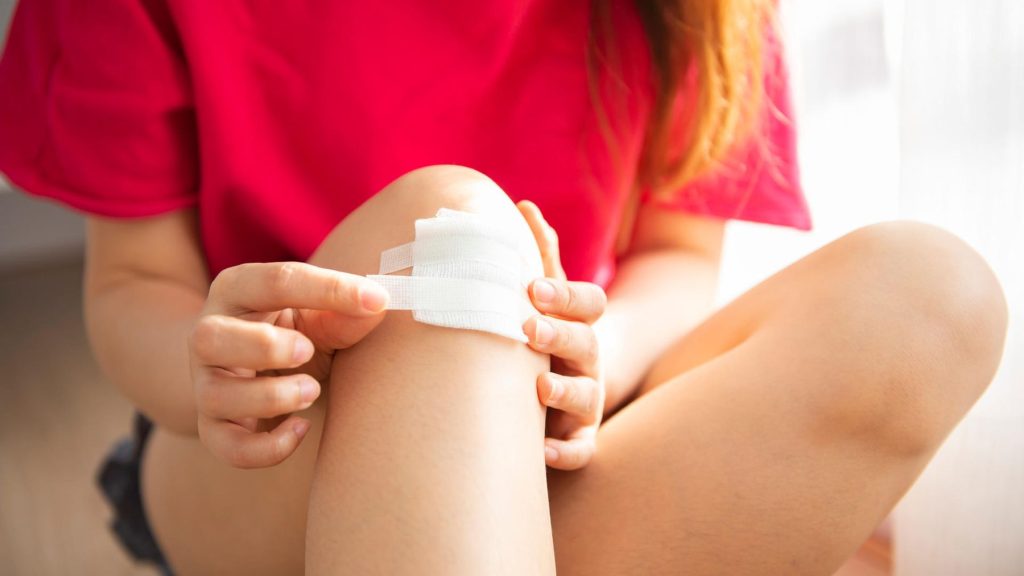
Treating open wounds properly

Treat cuts properly
Cuts from knives or shards are common household injuries. If the incisions are not too deep, rinsing and disinfecting is also sufficient here before covering them with a plaster. Minor cuts can bleed out a little before the treatment, so that dirt particles are washed out of the tissue.
On the other hand, on heavily bleeding, deep cuts, you should first press a sterile compress, if necessary, apply a pressure bandage, and then go to the doctor. He can rule out whether blood vessels or nerves may have been injured.
Wet wound healing: these are the advantages
In the event of an injury, tissue is destroyed, germs penetrate through the otherwise safe skin barrier. The body must mobilize great forces to form new skin cells and close the wound as quickly as possible. Meanwhile, experts agree that most wounds heal best if they are kept moist.
Already in the 60s, the Englishman Georg Winter had demonstrated in animal experiments that the formation of new tissue in a moist wound environment occurs up to 50 percent faster than under a dry crust. The wound secretion functions as a means of transport for nutrients and messenger substances as well as defense cells and thus creates optimal conditions for wound healing. Wet wound healing has another advantage: the patient is spared a lot of pain when changing the dressing, because the gauze compresses do not stick to the wound.
Treatment of larger wounds
Especially with larger wounds, normal plasters are usually no longer sufficient to cover the injury and protect it from drying out. They should be covered with sterile wound dressings and compresses. A pressure bandage and a lifting of the injured body part can also be useful. This reduces blood loss. Basically, for larger open wounds, a moist wound dressing is the remedy of choice. After all, without moisture, healing takes longer, and the risk of retaining a scar increases.
Antiseptic ointments are additionally effective against germs. Creams or sprays containing antibiotics, experts see rather critically. They increase the risk of antibiotic resistance and can lead to allergic reactions. Therefore, in principle, they should be used only after consultation with a doctor.
When should the Wound care at the doctor’s success?
Whether with home remedies or pharmacy products: wounds do not always heal easily or are so large that they have to be sewn or glued. In the case of open cuts or abrasions, pay close attention to warning signs of infection, such as painful swelling and redness. In the following cases, you should go to the doctor in a timely manner so that he can provide professional wound care:
- severe bleeding that is difficult to stop
- severe pain
- chronic open wounds
- Foreign bodies (splinters, stones) in the wound
- Sensory disturbances
- deep and large cuts, burns or lacerations
- gaping wound edges
- heavily soiled wounds that cannot be disinfected
- if there is a suspicion of muscle, tendon and vascular injuries
- if redness of the skin, swelling and pus occur (risk of infection)
In the case of larger, open wounds, the doctor will also check whether there is a sufficient vaccination against tetanus (tetanus) or whether it needs to be refreshed.
